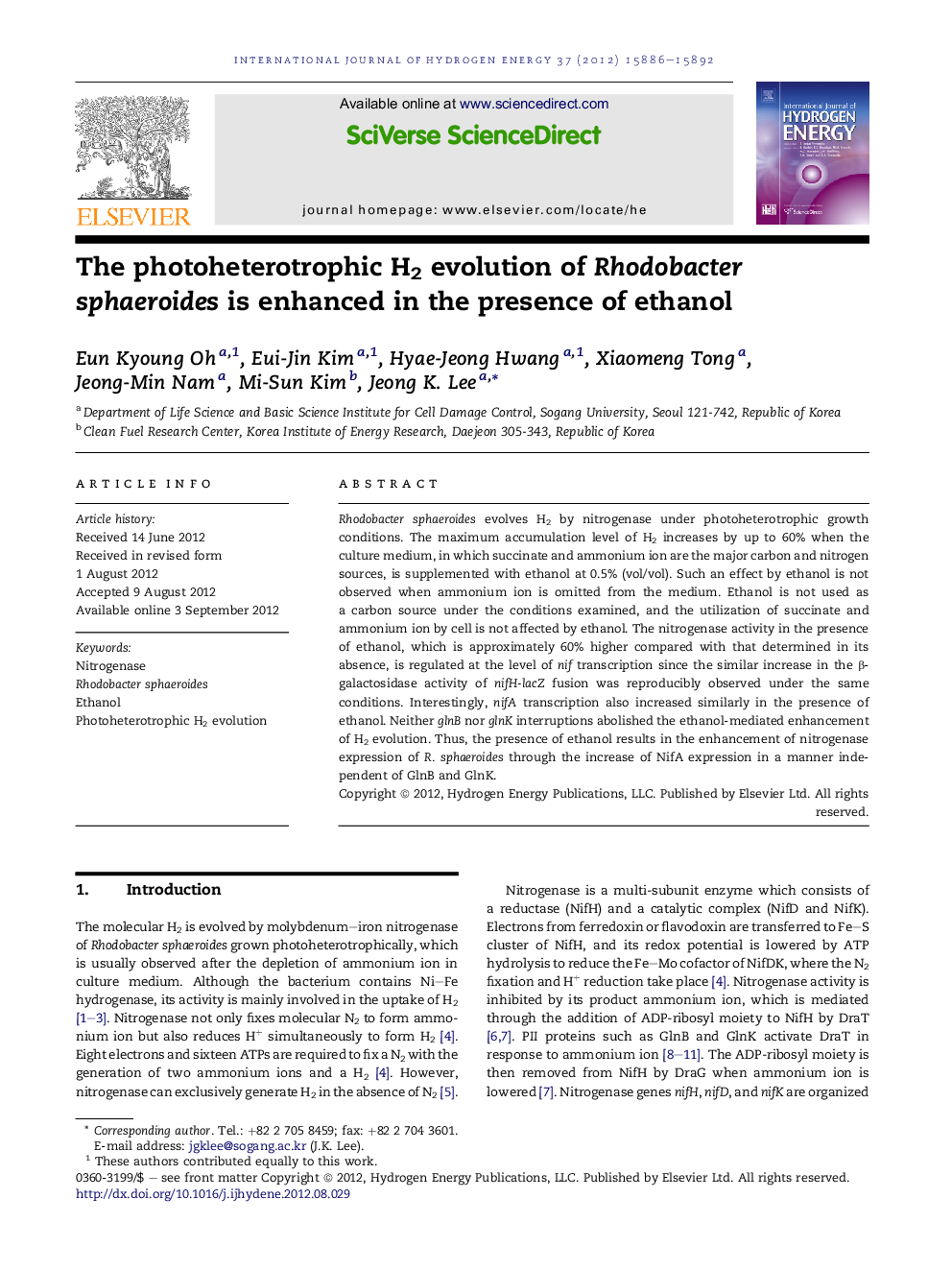| Article ID | Journal | Published Year | Pages | File Type |
|---|---|---|---|---|
| 1282115 | International Journal of Hydrogen Energy | 2012 | 7 Pages |
Rhodobacter sphaeroides evolves H2 by nitrogenase under photoheterotrophic growth conditions. The maximum accumulation level of H2 increases by up to 60% when the culture medium, in which succinate and ammonium ion are the major carbon and nitrogen sources, is supplemented with ethanol at 0.5% (vol/vol). Such an effect by ethanol is not observed when ammonium ion is omitted from the medium. Ethanol is not used as a carbon source under the conditions examined, and the utilization of succinate and ammonium ion by cell is not affected by ethanol. The nitrogenase activity in the presence of ethanol, which is approximately 60% higher compared with that determined in its absence, is regulated at the level of nif transcription since the similar increase in the β-galactosidase activity of nifH-lacZ fusion was reproducibly observed under the same conditions. Interestingly, nifA transcription also increased similarly in the presence of ethanol. Neither glnB nor glnK interruptions abolished the ethanol-mediated enhancement of H2 evolution. Thus, the presence of ethanol results in the enhancement of nitrogenase expression of R. sphaeroides through the increase of NifA expression in a manner independent of GlnB and GlnK.
► Ethanol (0.5% v/v) increased the H2 accumulation of Rhodobacter sphaeroides by up to 60%. ► Nitrogenase activity was increased in the presence of ethanol. ► Transcription of nifHDK and nifA was also elevated under the condition. ► The ethanol effect was not observed in ammonium ion-free medium. ► However, the ethanol effect is exerted in a way independent of GlnB and GlnK.
